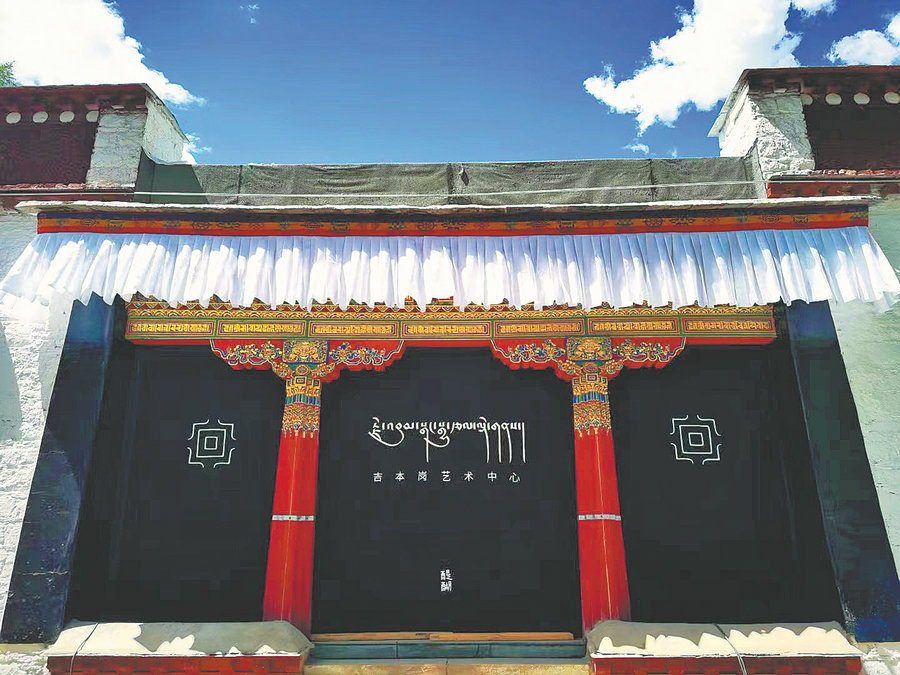

Xia Yujun still remembers the first time he laid eyes on the Jebum-gang Lha-khang temple in 2016.
"Pushing open the heavy door, one was greeted by a primitive and rustic atmosphere. The dimness inside the hall added a touch of mystery to the architecture itself," the man in his 30s recalls.
"It has a history of approximately 200 years and has murals from the Qing Dynasty (1644-1911)," he adds.
The ancient building's circular construction, ancient Tibetan pillars and verandas, and layers of weathered centuries-old murals were among the highlights that hit him between the eyes.
The temple is tucked away in a bustling business street and residential area, 3,650 meters above sea level, in Lhasa, Southwest China's Tibet autonomous region. First built during the second half of the 19th century, it is the only mandalic building — a symbolic Buddhist symmetrical structure.
It was used as granary for decades, and it is now a popular place among visitors in pursuit of modern art, thanks to five years of efforts by Xia and his team.
The top two stories of the temple were derelict when Xia and his team started the restoration.